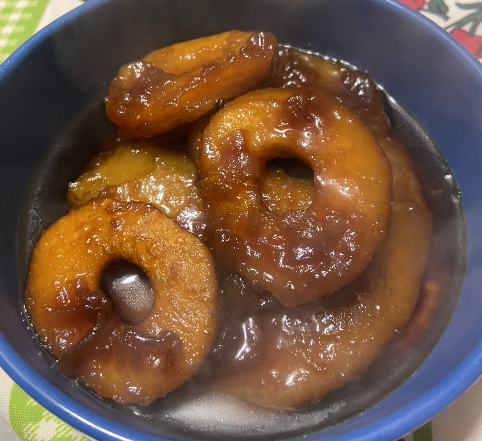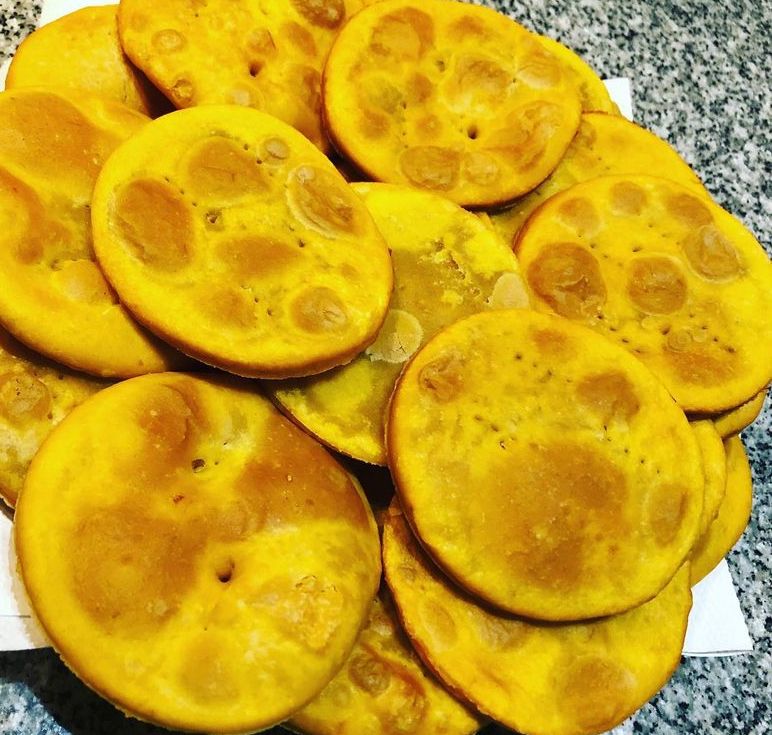ENG
Hello everyone, in Chile there is a food, or appetizer, or I don't know how to call it, but it is a kind of bread called “sopaipilla”. It is a composition of wheat flour with pumpkin. I tell you the recipe in its entirety, made by a Chilean lady expert on the subject.
ESP
Hola a todos, en Chile existe una comida, o aperitivo, o no sé cómo llamarlo, pero es una especie de pan llamado “sopaipilla”. Es una composición de harina de trigo con zapallo. La receta te la cuento en su totalidad, hecha por una señora chilena experta en el tema.
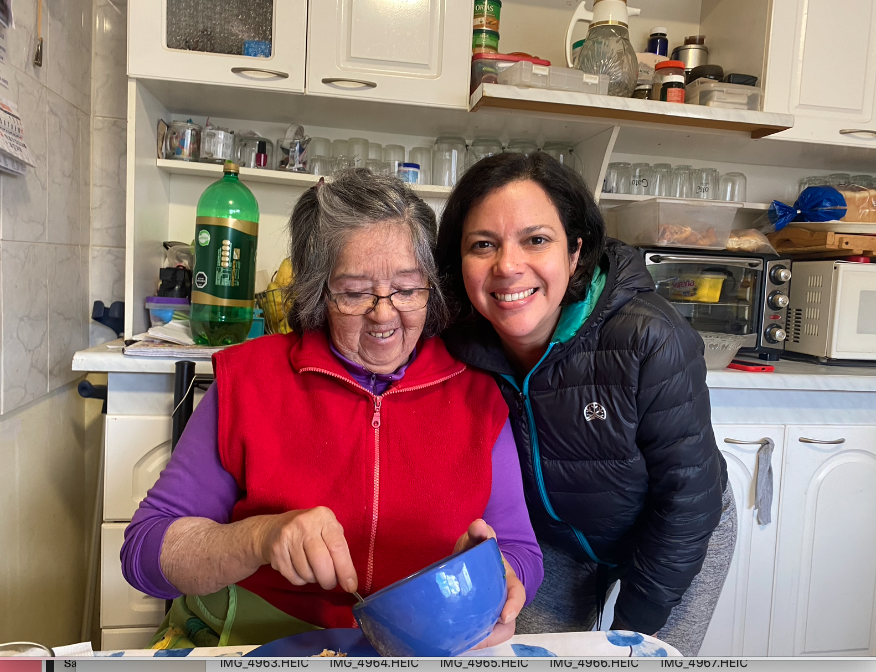
ENG
INGREDIENTS:
For the sopaipilla:
500 gr of pumpkin or pumpkin
1.5 kg of wheat flour
8 teaspoons of sugar
8 level teaspoons of salt
125 gr of melted margarine
150 ml oil
For the sweet sauce:
2 chunks of chancaca or panela (sugar cane)
1/2 teaspoon of cloves
1 cinnamon stick
Rind of an orange
First we cook the pumpkin without the skin in a pot until it softens well.
ESP
INGREDIENTES:
Para la sopaipilla:
500 gr de zapallo o auyama
1.5 kg de harina de trigo
8 cucharaditas de azúcar
8 cucharaditas rasas de sal
125 gr de margarina derretida
150 ml de aceite
Para la salsa dulce:
2 trozos de chancaca o panela
1/2 cucharadita de clavitos de olor
1 palito de canela
Corteza de una naranja
Primero ponemos a cocinar en una olla el zapallo sin la cáscara, hasta que se ablande bien.
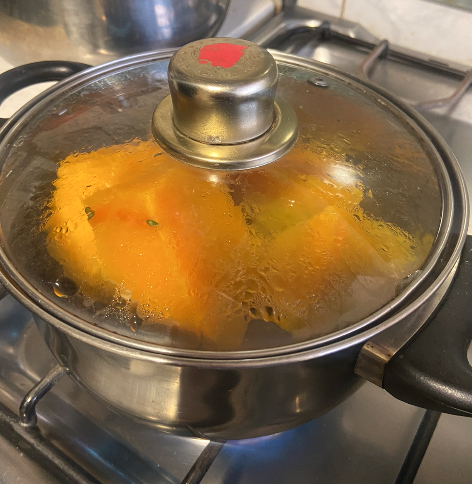
ENG
In another pot, melt the chancaca together with the orange peel, cloves and cinnamon.
ESP
En otra olla, ponemos a derretir la chancaca junto con la cáscara de naranja los clavitos y la canela.
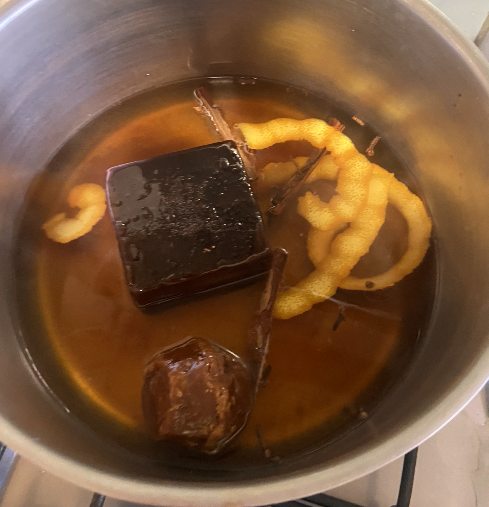
ENG
While this is being prepared, place the flour, salt and sugar in a bowl and mix these ingredients.
ESP
Mientras esto se esté preparando, en un bowl, colocamos la harina, la sal y el azúcar, mezclamos estos ingredientes.
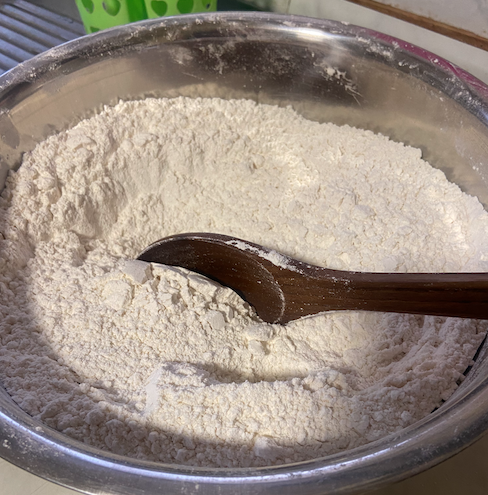
ENG
When the pumpkin is ready, blend it and add it to the flour, salt and sugar previously combined, add the melted margarine and add the oil while we continue mixing until we have a homogeneous dough. First we will mix with a paddle and then we will finish mixing with our hands on a work surface. We will have a dough similar to that of bread, but orange in color.
ESP
Cuando el zapallo esté listo, lo licuamos y se lo agregamos a la harina, sal y azúcar previamente unidos, le agregamos la margarina derretida y le agregamos el aceite mientras seguimos mezclamos hasta tener una masa homogénea. Primero mezclaremos on una paleta y luego terminaremos haciéndolo con las manos sobre un mesón. Nos va a quedar una masa parecida a la del pan, pero de color naranja.
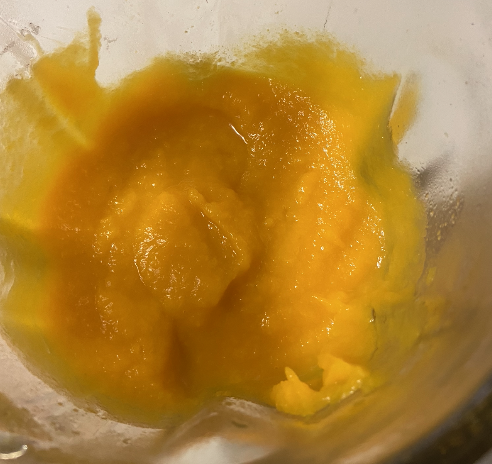
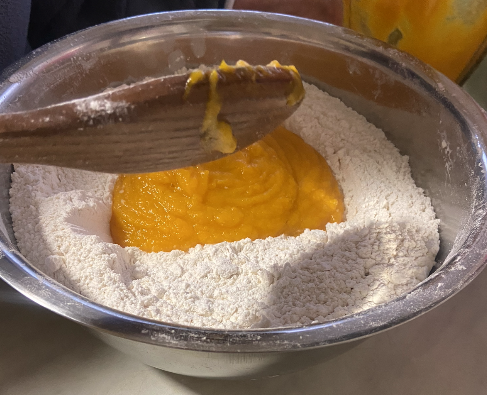
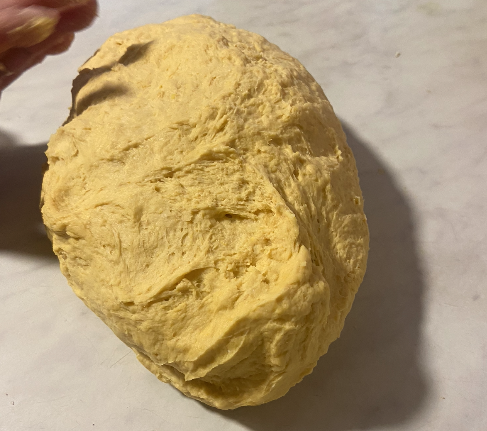
ENG
When we have the dough ready, we are going to separate balls of about 6 cm or 8 cm in diameter, and then with a rolling pin we are going to stretch them as much as possible so that we have some circumferences. If you have a round mold, you can also use it. After having them all stretched, we place them on a tray and with a fork we make holes in some places. Let them rest for about 20 minutes.
ESP
Cuando tengamos la masa lista, vamos a separar bolitas de unos 6 cm u 8 cm de diámetro, y luego con un rodillo vamos a estirarlas lo más posible para que nos queden unas circunferencias. Si tienes un molde redondo, te puede servir también. Luego de tenerlas todas estiradas, las colocamos sobre una bandeja y con un tenedor le hacemos hoyos en algunos sitios. Dejamos reposar por unos 20 minutos.
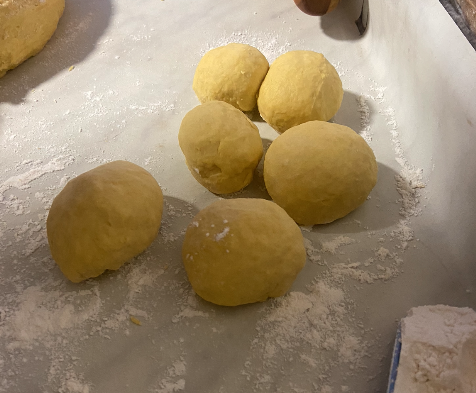
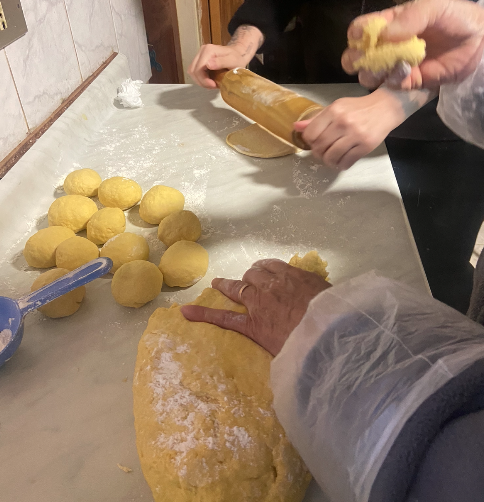
ENG
While all this is being done, check when the chancaca has melted to turn it off. After the time has elapsed, ideally put a pan with enough oil to heat. When it is ready and hot, we put the doughs to fry, taking care not to burn them, and turning them over until they are completely cooked. Remove them and place them in a bowl with absorbent paper.
ESP
Mientras se hace todo esto, hay que revisar cuando se haya derretido la chancaca para apagarla. Luego de transcurrido el tiempo, ponemos idealmente un paila con suficiente aceite a calentar. Cuando ya esté listo y en su punto de calentura, vamos metiendo las masas a freír, cuidando que no se quemen, y volteándolas hasta que se hayan cocinado por completo. Las vamos sacando y colocándolas en un bowl con papel absorbente.
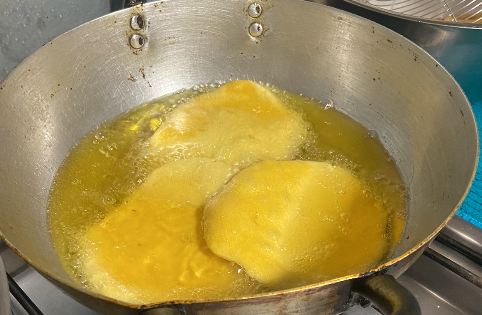
ENG
You can also make them in the shape of rings like donuts, they are even better because they are more toasted, in that case, with that shape they would be called “picarones”.
ESP
También puedes hacerlas en forma de aros como donas, quedan hasta mejor porque quedan más tostadas, en ese caso, con esa forma se llamarías “picarones”.
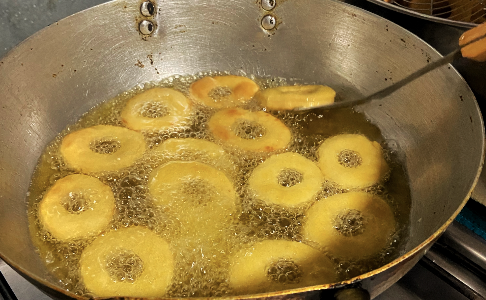
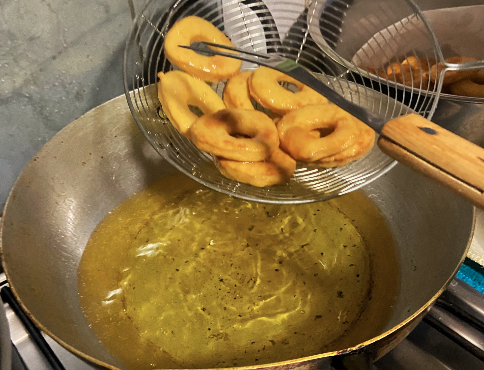
ENG
After frying them all, we put some of them in the sauce, let them cook for about 5 minutes and serve. They are spectacular!
ESP
Luego de freírlas todas, metemos algunas en la salsa, dejamos cocinándolas por unos 5 minutos y servimos. Quedan espectaculares!
